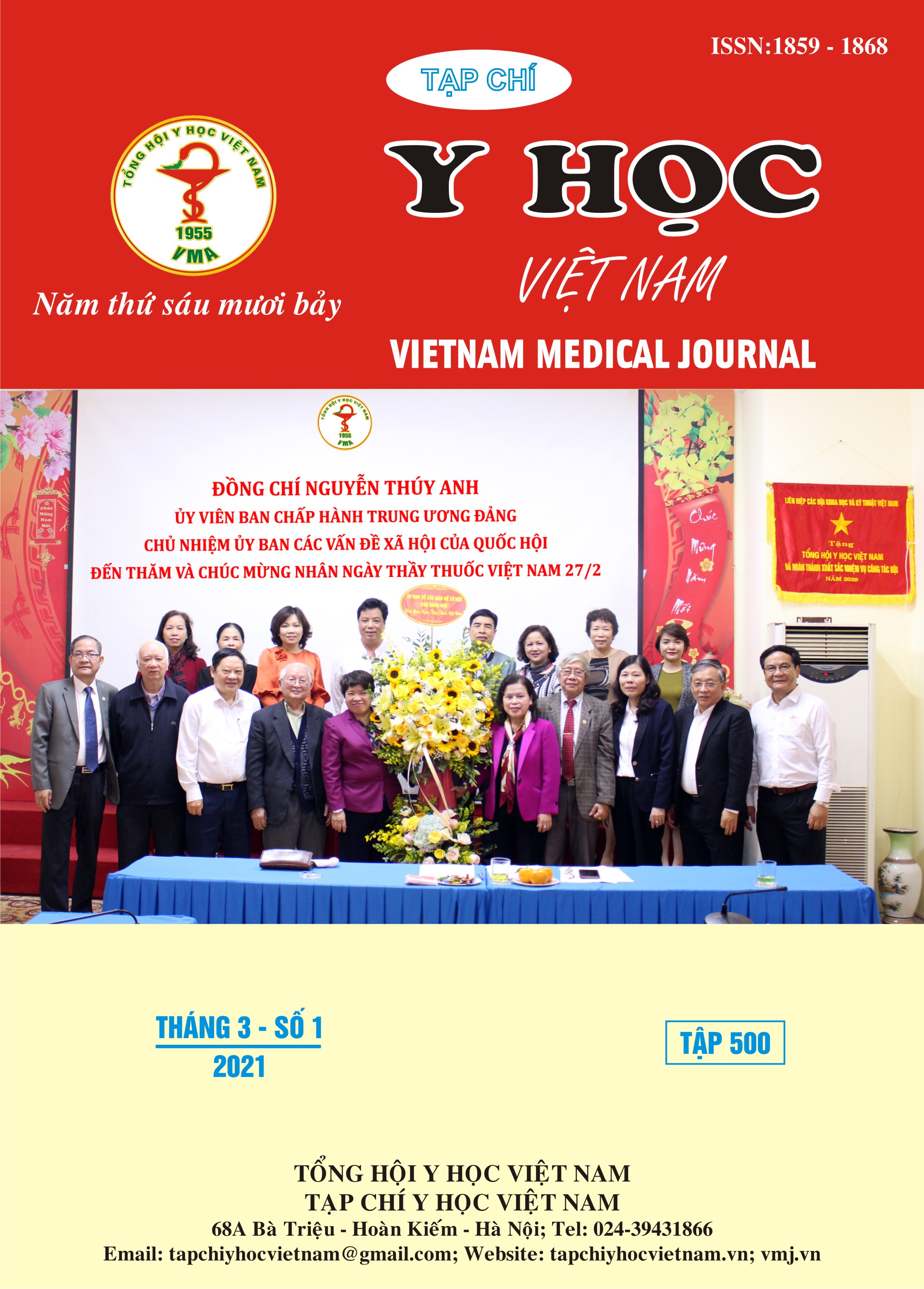MỘT SỐ YẾU TỐ LIÊN QUAN ĐẾN KHỞI PHÁT, MỨC ĐỘ NẶNG VÀ KẾT QUẢ ĐIỀU TRỊ NHIỄM TOAN CETON DO ĐÁI THÁO ĐƯỜNG TYPE 1 Ở TRẺ EM VÀ VỊ THÀNH NIÊN
Nội dung chính của bài viết
Tóm tắt
Đái tháo đường (ĐTĐ) type 1 là một trong những bệnh lý nội tiết phổ biến nhất ở trẻ em. Nhiễm toan ceton (NTCT) là một biến chứng cấp hay gặp ở bệnh nhi mắc ĐTĐ type 1, đây là biến chứng rất nặng của bệnh, gây tử vong nếu không được chẩn đoán và điều trị kịp thời. Ở trẻ nhỏ, đặc biệt dưới 2 tuổi, khả năng tiếp cận với các dịch vụ y tế thấp, dân tộc thiểu số, và chẩn đoán sai là các yếu tố nguy cơ của NTCT. Mục tiêu: mô tả một số yếu tố nguy cơ, mức độ nặng NTCT của bệnh nhi ĐTĐ type 1, và nhận xét kết quả điều trị NTCT. Đối tượng nghiên cứu: 212 bệnh nhi được chẩn đoán đái tháo đường type 1 lần đầu từ tháng 6/2015 đến 6/2020 tại bệnh viện Nhi Trung ương. Phương pháp: nghiên cứu một loạt ca bệnh. Kết quả: 60/212 bệnh nhân (28,3%) có NTCT; nồng độ C-peptid dưới 1,1 ng/ml làm tăng nguy cơ NTCT lên 5,13 lần (95% CI:1,72–15,29), tăng nguy cơ NTCT mức độ nặng lên 2,13 lần, (95% CI:0,20–22,21); chẩn đoán nhầm làm tăng 6,42 lần nguy cơ NTCT mức độ nặng, (95% CI:1,20–34,19). Thời gian hết toan trung bình là 22,5 giờ. Suy thận cấp gặp ở 30% bệnh nhân NTCT. Không có bệnh nhân tử vong. Kết luận: Bệnh nhân được chẩn đoán ĐTĐ type 1 lần đầu ở Bệnh viện Nhi Trung ương có tỷ lệ NTCT cao. Nồng độ C-peptid dưới 1,1ng/ml, chẩn đoán nhầm là các yêu tố gây gia tăng nguy cơ và mức độ NTCT. Suy thận cấp là biến chứng hay gặp trong NTCT.
Chi tiết bài viết
Từ khóa
Đái tháo đường type 1, nhiễm toan ceton do đái tháo đường
Tài liệu tham khảo
2. Mayer-Davis E.J., Kahkoska A.R., Jefferies C. et al (2018). ISPAD Clinical Practice Consensus Guidelines 2018: Definition, epidemiology, and classification of diabetes in children and adolescents. Pediatric Diabetes, 19, 7-19.
3. Usher-Smith J.A., Thompson M., Ercole A. et al (2012). Variation between countries in the frequency of diabetic ketoacidosis at first presentation of type 1 diabetes in children: a systematic review. Diabetologia, 55(11), 2878-2894.
4. Wolfsdorf J.I., Glaser N., Agus M., et al (2018). ISPAD Clinical Practice Consensus Guidelines 2018: Diabetic ketoacidosis and the hyperglycemic hyperosmolar state. Pediatric Diabetes, 19, 155-177.
5. Professional Practice Committee 2018.Standards of Medical Care in Diabetes—2018.Diabetes Care, 41(Supplement 1), S3-S3.
6. Usher-Smith J.A., Thompson M.J., Sharp S.J. et al (2011). Factors associated with the presence of diabetic ketoacidosis at diagnosis of diabetes in children and young adults: a systematic review. BMJ, 343, d4092-d4092.
7. Varshney GA., Varshney D., Mehr V, et al (2015). Clinical profile and outcome of diabetic ketoacidosis in children at tertiary care hospital. Journal Evolution of Medical Dental Sciences, 4(31), 5329-5333.
8. Mohammed A.N (2015)Characteristics of pediatric diabetic ketoacidosis patients in Saudi Arabia.Saudi Medicine Journal, Vol. 36 (1).
9. Rosenbauer J (2002). Clinical characteristics and predictors of severe ketoacidosis at onset of type 1 diabetes mellitus in children in a North Rhine-Westphalian Region, Germany.Journal of Pediatric Endocrinology & Metabolism, 15, 1137-1145.


